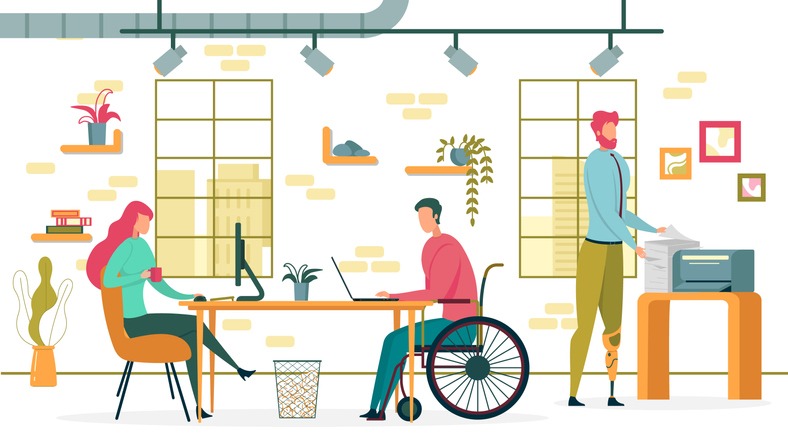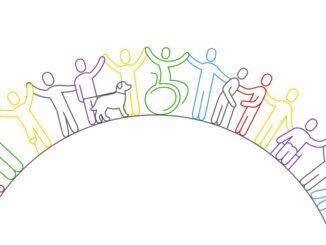
People with disabilities face several barriers to entering the workplace and frequently face discrimination and exclusion – here’s what your organisation can do to combat these barriers
CREDIT: This is an edited version of an article that originally appeared on Entrepreneur
To develop an institution of inclusivity, people with disabilities must be represented and embraced at every level. According to the World Health Report, an estimated 1.3 billion people — or 16% of the global population — experience a significant disability today. Unfortunately, people with disabilities face mistreatment and discrimination just for having a disability.
Based on the United Nations Department of Economic and Social Affairs, a 2004 survey found that only 35% of working-age persons with disabilities are employed, compared to an employment rate of 78% in the rest of the population. Two-thirds of unemployed respondents with disabilities said they would like to work but could not find jobs.
Individuals with disabilities often encounter greater challenges in finding employment due to the perception that they are less capable than others or unable to work, a misconception that persists widely. A positive outcome of the pandemic has been the shift towards remote and hybrid work setups, which has brought about increased flexibility and accommodations for people with disabilities.
Before the pandemic, numerous individuals with disabilities were denied job opportunities solely due to their request for remote work. However, the provision of these options alone is insufficient, and further efforts are necessary to fully embrace inclusivity.
Tackling Ableism and Sanism
Ableism, which involves discriminatory attitudes towards individuals with disabilities based solely on their disability, and sanism, a similar bias against those with mental health conditions, often take a backseat in discussions revolving around diversity, equity, inclusion, and accessibility (DEIA).
Surprisingly, only about four percent of DEI programs, as indicated by Harvard Business Review, encompass disability-related matters. Even DEI initiatives aimed at addressing workplace discrimination fall short in adequately representing the disability community. This deficiency perpetuates ableism and sanism within the workforce, which is deeply concerning considering the significant obstacles faced by people with disabilities, including low labour force participation rates, elevated unemployment rates, and wage disparities.
Moreover, many organisations fail to include the “A” for accessibility in DEIA, overlooking it as a matter of equity. For instance, providing identical equipment to two individuals proves futile if someone with a disability is unable to effectively use the technology provided.
Investing in Accessibility
Mere pronouncements regarding prioritising the hiring of individuals with disabilities are insufficient if the organisation remains inaccessible. Inaccessibility introduces supplementary hurdles that individuals with disabilities must surmount, making it notably arduous for them to stand out, secure employment, receive consideration, and be celebrated. Accessibility is an imperative that all organisations should invest in to enhance the experience for users, customers, and staff members alike.
Accessibility transforms information, content, and all aspects of a business into coherent, meaningful, and user-friendly entities. It is crucial to ascertain that resources are thoughtfully allocated to accessibility, rather than addressing it as an afterthought when issues arise. To be truly proactive, organisations should prioritise accessibility even before accommodation requests surface. A substantial portion of the budget should be dedicated to forming a dedicated accessibility team or role, such as a chief accessibility officer. Partnering with a consulting agency can also provide a valuable external perspective.
Additionally, evaluating accessibility across the organisation, not just within specific domains like technology and infrastructure, but also in areas like recruitment, job descriptions, content, social media, operations, and events, yields more impactful results. For instance, eliminating ableist language from job applications broadens the talent pool by removing barriers that deter candidates with disabilities.
Accessibility Benefits Everyone
Comprehensively embracing accessibility is not solely about achieving equity for individuals with disabilities; it also fosters ease of use for all. While individuals with disabilities should indeed be a primary focus for creating equitable products, leading with accessibility in an organisational strategic plan yields systemic benefits for everyone.
Celebrating Disability Pride
Recent data from the National Organization on Disability (NOD) shows an increase in the number of people with disabilities entering the workforce, yet self-identification rates have declined from 4.09 in 2020 to 3.68 in 2021. Transforming support for individuals with disabilities involves moving beyond mere accommodation provision to embracing disability pride.
Disability pride entails viewing disability not solely as a medical condition but as a social identity replete with enriching intersectionality, community, and culture. It asserts that individuals need not feel ashamed of their disabilities. Disability Pride Month in July and National Disability Employment Awareness Month in October underscore the significance of this shift, aiming to redirect historic stigma and shame towards pride as the future of disability inclusion.
Inclusive Strategies
Numerous avenues exist for integrating individuals with disabilities into the workplace. These encompass hosting workshops on disability inclusion, encouraging self-identification, providing legal resources, facilitating open dialogues on disability pride and history, establishing employee resource groups (ERGs) for people with disabilities, caregivers, and allies, collaborating with other networks to highlight the interconnections between disability and diverse social identities, appointing board members with disabilities, and monitoring organisational operations to ensure inclusivity is upheld.



Be the first to comment